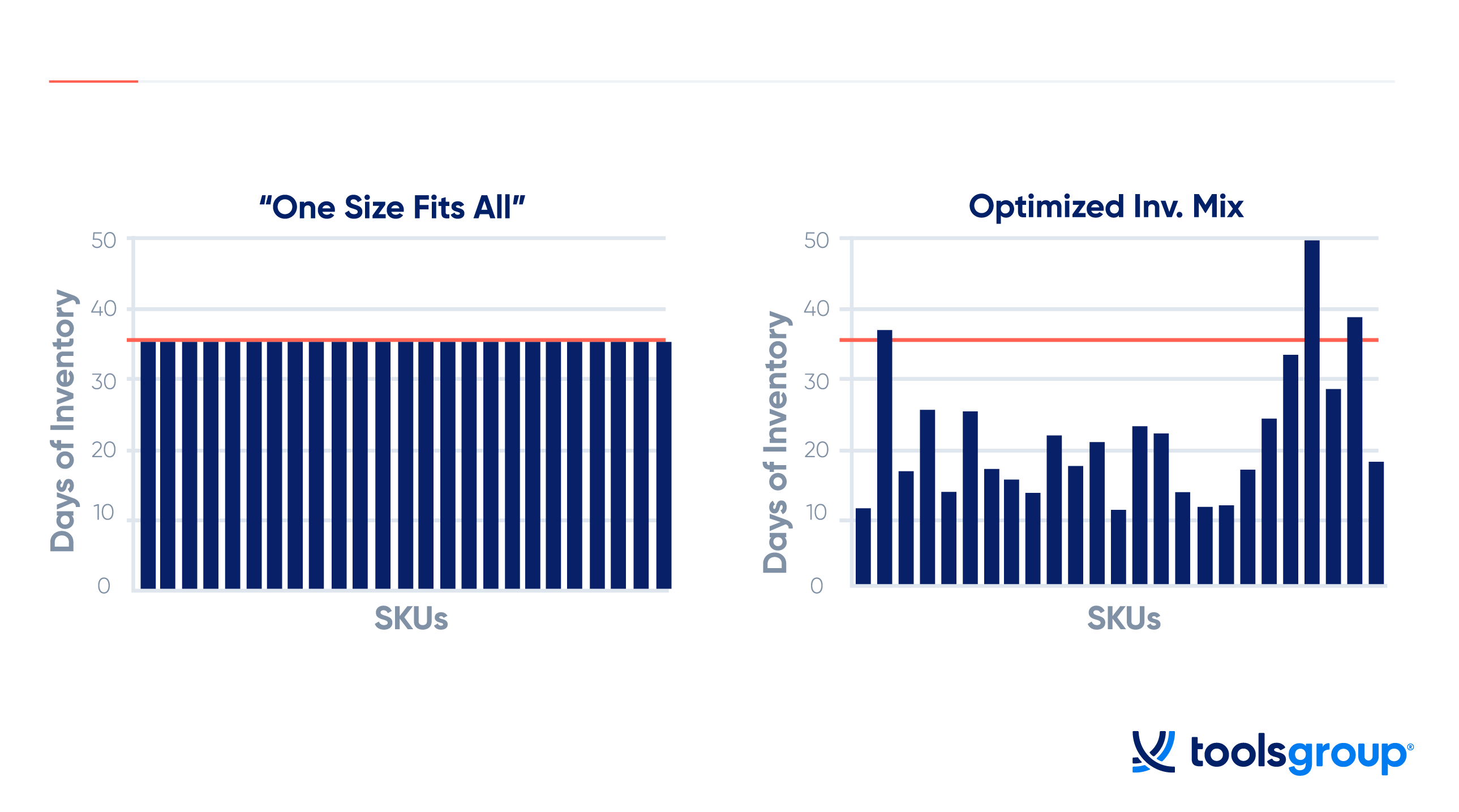High Performance Inventory: The Supply Chain Differentiator
Tired of the phrase “new normal” yet? Disruption lingers, consumer trends change, lead times stretch. It’s the typical supply chain refrain.
So how can organizations face this new market landscape with confidence and a solid planning process?
The key lies in high performance inventory.
Forward-looking supply chain professionals understand that inventory is not an end in itself; it’s a means – to enhanced customer service, increased profitability, and greater efficiency.
A successful planning process leverages inventory itself as a tool, increasing the payoff of available stock by balancing it with business goals and service targets.
This is no theory – plenty of companies have already discovered the advantages of high performance inventory.
What is High Performance Inventory?
High performance inventory refers to inventory that is managed so that it is always available when needed but never overstocked.
A high performance inventory strategy focuses on optimizing inventory levels and minimizing costs while ensuring product availability and safeguarding the customer experience.
Put simply, high performance inventory is how you get the most bang for your buck out of your working capital investment.
Probabilistic Planning: How to Achieve High Performance Inventory
High performance inventory is the result of tried and true supply chain planning capabilities that constitute a planning strategy known as probabilistic planning.
Probabilistic planning uses probability theory to forecast demand and optimize inventory. It employs machine learning engines to analyze multiple demand variables to identify and plan for a range of possible outcomes.
Using this forecast in tandem with advanced optimization algorithms, it determines optimal inventory levels, SKU by SKU, in every location across a supply chain network, while taking into consideration the best trade-offs between working capital investment and service targets.
So what are the nuts and bolts of this process?
Probabilistic Forecasting
Your forecast is the foundation of your supply chain planning process, and the key to forecast accuracy is probabilistic forecasting.
This is where a machine learning-based probabilistic forecast comes in.
Thanks to AI, the probabilistic method works on a more granular level, drilling down into daily demand for an item at each location. It examines internal data (like sales history, lot size, stockouts, and order frequency) as well as external variables (like weather, seasonality, and regional customer behavior).
Then it calculates an AI-generated range of possible forecasts, as well as the likelihood of each outcome.
This differentiates it from traditional forecasts, which typically provide a one-number forecast and don’t provide any further context regarding other possible inventory targets.
Therefore, a probabilistic forecast incorporates more information to create better predictions and, by helping planners visualize the benefit/risk tradeoffs, enables teams to make more informed and strategic decisions.
New to probabilistic forecasting?
Check out our library of videos, case studies, and other helpful resources here →
Multi-Echelon Inventory Optimization
So you have this great probabilistic forecast. How can you make the most of it and apply it to the rest of your planning process?
Multi-Echelon Inventory Optimization (MEIO) is a strategy that positions inventory in the most effective and cost-efficient points in the supply chain by examining multiple levels of demand.
It takes that probabilistic forecast and uses it to set inventory targets at all stocking locations and optimize inventory across all nodes and tiers of the supply chain concurrently.
When we’re talking about “optimizing” inventory, we don’t mean making blanket cuts to inventory across the board.
Because that probabilistic forecast has provided such a granular understanding of demand, it makes it easier for MEIO’s algorithms to determine the optimal inventory target for every item at every location across the network.

A part of that process is what is called outcome-based inventory optimization, which assigns a service level target to each SKU in each location.
This allows companies to optimize inventory against a specific service level or profit targets, allowing them to balance inventory against specific business goals.
By tailoring inventory to demand and making strategic tradeoffs, MEIO helps organizations eliminate excess inventory while still meeting demand.
What are the Benefits of High Performance Inventory?
This strategy comes with big payoffs centered around efficiency gains.
By getting the right product to the right customer at the right time – without being overloaded with surplus stock – companies can:
- Reduce storage and transportation costs
- Reallocate working capital from inventory to growth opportunities
- Improve customer satisfaction and brand loyalty
- Limit waste and support sustainability initiatives
Real-World Examples of High Performance Inventory
Companies around the world are embracing this high performance inventory strategy – with great success.
Take, for instance, Aston Martin. The planning team was charged with raising service level targets for first time availability (FTA) by 2% without increasing inventory.
Not only did the team reduce the inventory value of its safety stock by 18%, but it immediately improved FTA service level to 97.1%, above its target.
Another example is Gaviota, a leading manufacturer of components, accessories, and systems for rolling shutters, awnings, and enclosures.
Gaviota reduced stock levels by approximately 43%, but raised service levels across all products by 18 percentage points.






